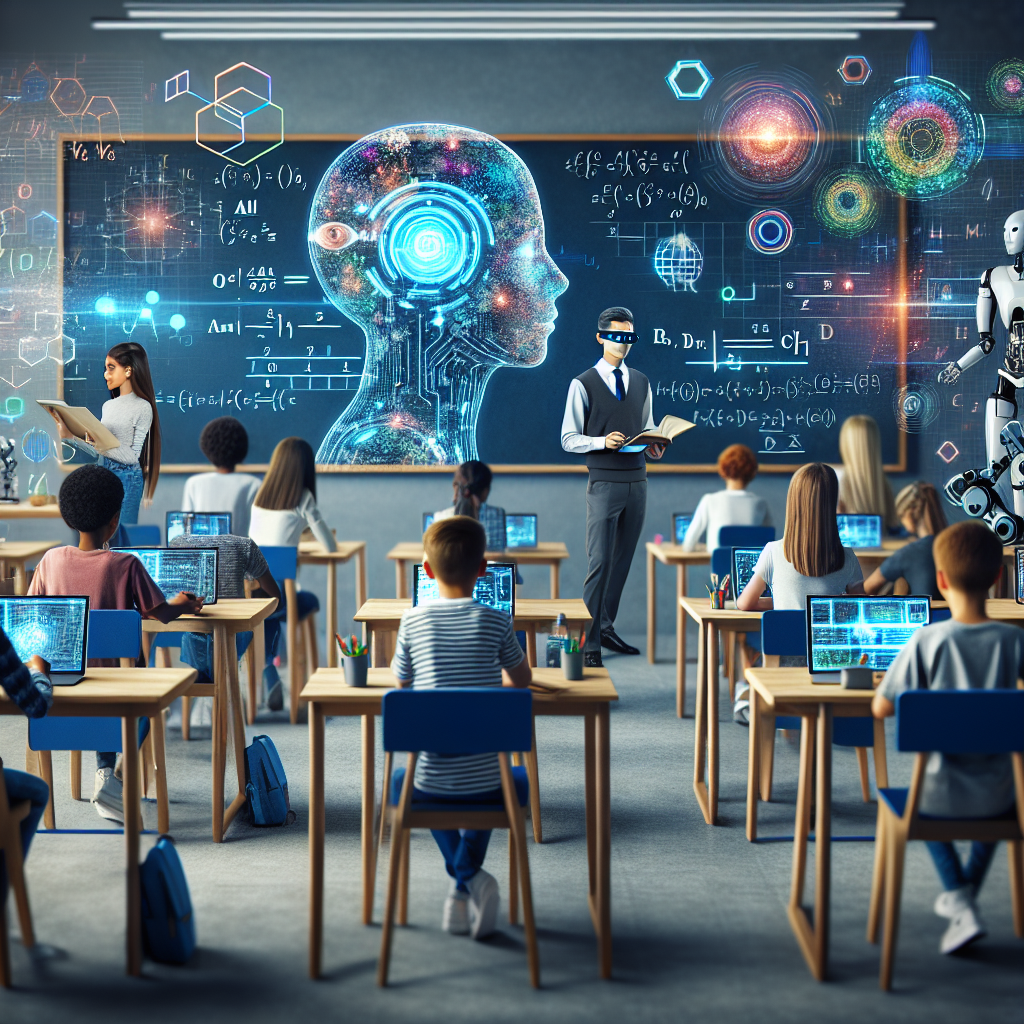AI in Education: How Technology is Transforming Learning
In recent years, the field of education has seen a significant transformation due to the integration of artificial intelligence (AI) technology. AI has the potential to revolutionize the way students learn, teachers teach, and educational institutions operate. From personalized learning experiences to smart classrooms, AI is changing the landscape of education in numerous ways.
One of the key benefits of AI in education is its ability to provide personalized learning experiences for students. Traditional classrooms often follow a one-size-fits-all approach, where all students are taught the same material at the same pace. However, AI technology can analyze each student’s learning style, strengths, and weaknesses to create a customized learning plan. This allows students to learn at their own pace and focus on areas where they need the most help.
AI-powered tools such as intelligent tutoring systems can also provide instant feedback to students, helping them to understand their mistakes and improve their performance. These tools can adapt to each student’s individual progress and provide targeted assistance in areas where they are struggling. This personalized approach to learning can lead to better academic outcomes and increased student engagement.
In addition to personalized learning, AI technology is also transforming the role of teachers in the classroom. AI tools can help teachers to automate routine tasks such as grading assignments, creating lesson plans, and tracking student progress. This allows teachers to focus more on providing individualized support to students and fostering a collaborative learning environment. AI can also assist teachers in identifying students who may be at risk of falling behind and provide early interventions to help them succeed.
Furthermore, AI technology is enabling the development of smart classrooms that are equipped with cutting-edge tools and resources. For example, AI-powered virtual reality (VR) and augmented reality (AR) applications can create immersive learning experiences that engage students in ways that traditional methods cannot. These technologies can bring complex concepts to life and help students to visualize abstract ideas in a more tangible way.
Another important application of AI in education is in the field of data analytics. Educational institutions can use AI algorithms to analyze vast amounts of data on student performance, attendance, and behavior to identify patterns and trends. This data-driven approach can help schools to make informed decisions on curriculum development, resource allocation, and student support services. AI can also be used to predict student outcomes and provide early interventions to prevent academic failure.
Despite the many benefits of AI in education, there are also challenges and concerns that must be addressed. One of the main concerns is the potential for bias in AI algorithms, which can lead to unfair outcomes for certain groups of students. It is important for developers to ensure that AI systems are designed and trained in a way that promotes equity and inclusivity in education.
Another challenge is the need for adequate training and support for teachers to effectively integrate AI technology into their classrooms. Many educators may feel overwhelmed by the rapid pace of technological change and may require professional development opportunities to build their skills and confidence in using AI tools.
Additionally, there are concerns about data privacy and security in the use of AI in education. Educational institutions must ensure that student data is protected and that appropriate safeguards are in place to prevent unauthorized access or misuse of sensitive information.
In conclusion, AI technology has the potential to transform education in profound ways, from personalized learning experiences to smart classrooms and data-driven decision-making. By harnessing the power of AI, educators can create more engaging and effective learning environments that meet the diverse needs of students. However, it is important to address the challenges and concerns associated with AI in education to ensure that its benefits are realized in a responsible and ethical manner.
FAQs:
Q: How is AI being used in education?
A: AI is being used in education to provide personalized learning experiences, automate routine tasks for teachers, create smart classrooms with immersive technologies, and analyze data to improve student outcomes.
Q: What are the benefits of AI in education?
A: The benefits of AI in education include personalized learning, improved student engagement, enhanced teacher support, and data-driven decision-making.
Q: What are the challenges of using AI in education?
A: Challenges of using AI in education include potential bias in algorithms, the need for teacher training and support, and concerns about data privacy and security.
Q: How can educators integrate AI technology into their classrooms?
A: Educators can integrate AI technology into their classrooms by exploring AI-powered tools and resources, participating in professional development opportunities, and collaborating with colleagues to share best practices.
Q: How can AI help to improve student outcomes?
A: AI can help to improve student outcomes by providing personalized learning experiences, identifying students at risk of falling behind, and analyzing data to inform targeted interventions.
Q: What are some examples of AI applications in education?
A: Examples of AI applications in education include intelligent tutoring systems, virtual reality and augmented reality tools, data analytics platforms, and automated grading systems.

